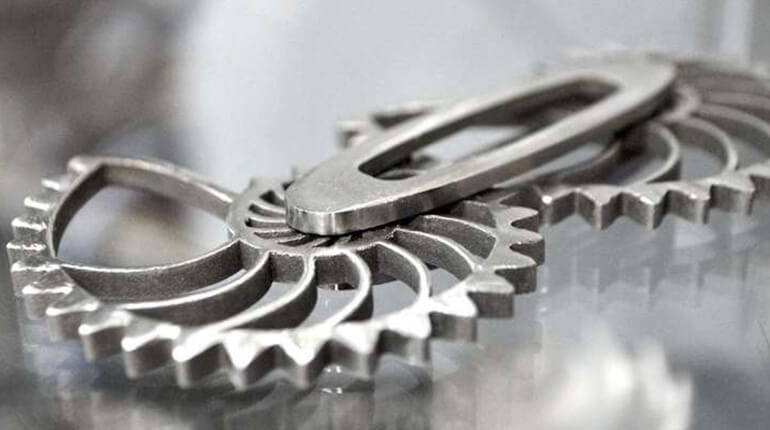
4 Types of Titanium Grades Explained
Selecting the right material determines the success of your engineering projects. This guide covers 4 types of titanium grades explained, focusing on properties critical for precision parts.
You will learn the specific differences between pure grades and alloys. We break down strength, ductility, and machinability to help you specify the perfect material.
Overview: Commercially Pure vs. Titanium Alloys

Titanium materials fall into two main categories: Commercially Pure (CP) and Alloys. You need to distinguish between them early in the design phase.
CP titanium (Grades 1-4) is unalloyed metal. It offers superior corrosion resistance and high formability. However, it yields lower tensile strength compared to alloys.
Titanium alloys mix titanium with elements like aluminum and vanadium. These additives dramatically increase hardness and strength. Engineers choose alloys for high-stress structural components.
Detailed Guide to the 4 Key Titanium Grades
Your choice depends heavily on the specific mechanical demands of the application. Here are the four most common grades in CNC machining.
Grade 1: The Most Ductile Option
Grade 1 is the softest titanium in the Commercially Pure family. It possesses the highest cold forming capabilities.
You should select Grade 1 for parts requiring deep drawing. It offers excellent impact toughness and resists corrosion in saltwater. It is frequently used in chemical processing equipment.
Grade 2: The Workhorse of Commercially Pure Titanium
Grade 2 is the industry standard for general manufacturing. It provides a reliable balance of moderate strength and good ductility.
It is stronger than Grade 1 but remains easy to form and weld. You will find it is widely available and cost-effective. It is ideal for heat exchangers and medical equipment housing.
Grade 5 (Ti-6Al-4V): The Aerospace Standard
Grade 5 is the most popular titanium alloy worldwide. It accounts for approximately 50% of all global titanium usage.
This alloy contains 6% Aluminum and 4% Vanadium. You get immense tensile strength and heat resistance. It is much stronger than CP grades but tougher to machine.
Grade 23 (Ti-6Al-4V ELI): The Medical Choice
Grade 23 is a purer version of Grade 5, known as "Extra Low Interstitials" (ELI). It contains lower levels of oxygen, nitrogen, and iron.
This reduction in impurities improves fracture toughness. You should specify Grade 23 for biomedical applications. It is the top choice for orthopedic implants and surgical instruments.
Mechanical Properties Comparison of Titanium Grades

Comparing data points helps you validate your material selection.
| Property | Grade 1 | Grade 2 | Grade 5 (Ti-6Al-4V) | Grade 23 (ELI) |
| Tensile Strength (MPa) | ~240 | ~345 | ~895 | ~860 |
| Yield Strength (MPa) | ~170 | ~275 | ~828 | ~795 |
| Elongation (%) | 24% | 20% | 10% | 10-15% |
| Hardness (Rockwell) | B 70 | B 80 | C 36 | C 30-35 |
Factors to Consider When Selecting Titanium Materials
Strength Needs: If your part bears heavy loads, avoid CP grades. Grade 5 offers the high strength-to-weight ratio required for aerospace.
Environment: For marine or chemical environments, Grade 2 is excellent. Its oxide layer prevents rust and degradation naturally.
Cost Constraints: Grade 2 is typically cheaper than Grade 5. Additionally, machining Grade 5 costs more due to faster tool wear.
Thermal Conditions: Alloys like Grade 5 perform better at high temperatures. They maintain structural integrity up to 400°C.
Common Challenges in CNC Machining Titanium
Machining titanium is difficult and requires experienced operators.
Heat Concentration: Titanium is a poor heat conductor. Heat stays in the tool edge, not the chip. This causes rapid tool failure.
Work Hardening: The material hardens instantly if the cutter dwells. You must maintain aggressive, consistent feed rates.
Material Adhesion: Titanium tends to gall or weld to the cutter. We utilize high-pressure coolant systems to prevent this issue.
Industrial Applications for Different Titanium Grades
- Aerospace: Grade 5 is critical for landing gear, fasteners, and jet engines.
- Medical: Grade 23 is the standard for bone screws and joint replacements.
- Marine: Grade 2 protects desalination equipment and ship components.
- Chemical: Grade 1 handles aggressive acids in processing plants.
Standard Machining's Expertise in Titanium Parts

At Standard Machining, we specialize in the complex removal of exotic materials. Our CNC experts know how to manage titanium's unique thermal properties.
We use advanced 5-axis machinery to ensure tight tolerances. Whether you need Grade 2 flanges or Grade 23 implants, we deliver precision.
Conclusion
Choosing between Grade 1, 2, 5, and 23 requires balancing ductility, strength, and budget. Understanding these 4 types of titanium grades ensures your final product performs reliably.
Need professional manufacturing support? Contact Standard Machining today for a fast quote on your high-precision titanium projects.
FAQs: Titanium Grades and Machining
Which titanium grade is the most difficult to machine?
Grade 5 is generally the hardest to machine among these common grades. Its high shear strength creates significant heat and tool wear. We use specialized carbide tooling to cut it efficiently.
Is Grade 2 titanium magnetic?
No, Grade 2 titanium is non-magnetic. This makes it safe for MRI equipment and sensitive electronics. It will not interfere with magnetic fields.
Can you weld Grade 5 titanium?
Yes, but it requires strict environmental controls. You must use inert gas shielding to prevent embrittlement. Electron beam welding is often the preferred method for this alloy.
Why is Grade 23 better for implants than Grade 5?
Grade 23 offers superior fracture toughness due to lower impurities. It resists fatigue cracking better than standard Grade 5. This reliability is vital for parts remaining inside the human body.


